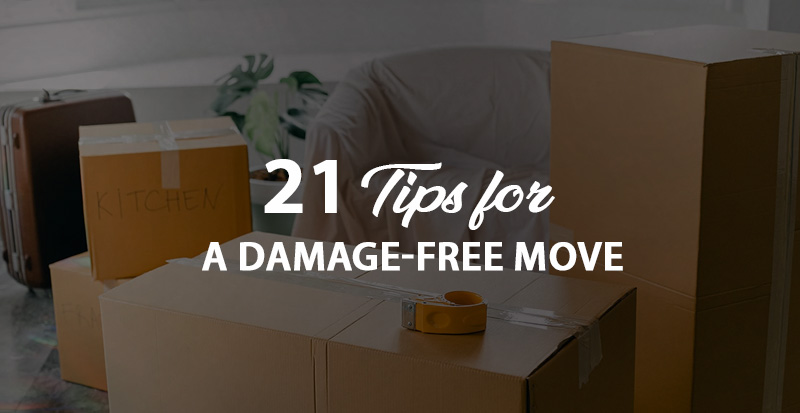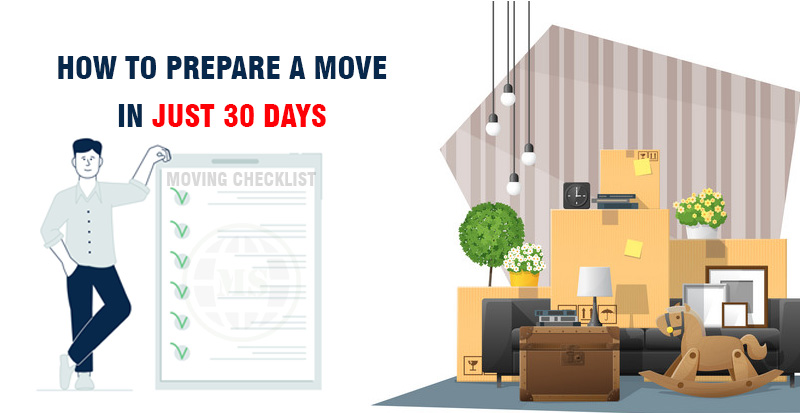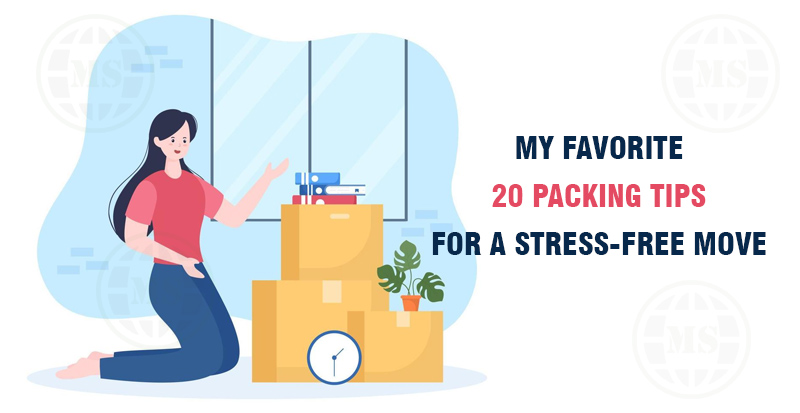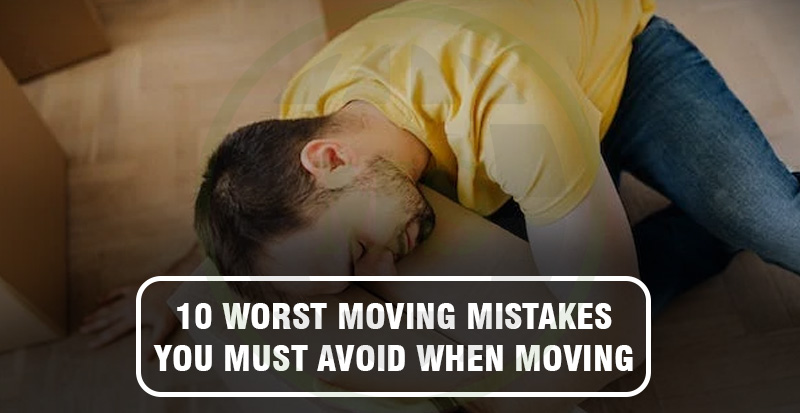Are you planning to move to a new home? You must be excited about your upcoming move. Embark on a journey of relocation might be interesting but it requires careful planning and execution. The process of home relocation involves more than just physical transition. It is a careful dance of planning, execution, and preservation. The process can be challenging and overwhelming. As you prepare for the significant step of moving, the importance of moving with care cannot be overstated. In this detailed guide, we present “21 Proven Tips to Ensure a Damage a Damage-Free Move,” a roadmap crafted with precision and expertise. Join us as we navigate the intricacies of a seamless move, ensuring your belongings arrive at their new destination unscathed. From the initial preparations to the final farewell, let’s embark on this journey together, prioritizing the safety of your cherished possessions.
Expert-Backed Strategies For a Worry-Free Journey
Moving to a new home can be a daunting task, but with careful planning and attention to detail, you can ensure a smooth and damage-free relocation experience. Here are 21 tips to help safeguard your goods throughout the moving process:
1. Plan Ahead
Moving requires careful planning. Start early to avoid the stress of last-minute decisions. A well-thought-out plan will help you stay organized and reduce moving day anxiety.
Planning ahead involves creating a timeline for tasks such as hiring movers, packing, and notifying utilities. This proactive approach sets the stage for a successful and damage-free move.
2. Create a Checklist
Develop a comprehensive checklist to keep track of all moving-related tasks. A checklist ensures that no detail is overlooked, from notifying service providers to transferring utilities and forwarding mail.
As you complete each task, mark it off your list. This simple yet effective strategy will help you stay organized and minimize the risk of forgetting crucial steps.
3. Choose Reliable Movers
Research and select reputable moving companies with positive reviews and a proven track record. A reliable packers and movers company can make all the difference in ensuring a smooth, stress-free, and damage-free move.
Check online reviews, ask for recommendations, and verify the company’s credentials. Investing time in choosing the right movers pays off in the long run.
4. Get Insurance
Protect your belongings by considering moving insurance. Accidents can happen during transit, and having insurance coverage provides peace of mind.
Explore insurance options with your chosen moving company or consider third-party insurance providers. Knowing that your possessions are covered adds an extra layer of security.
5. Declutter Before Packing
Before packing, assess your belongings and declutter. Donate or sell items you no longer need to reduce the number of things you have to move.
Decluttering not only lightens the load but also ensures that you’re only moving items that truly matter to you. It’s an opportunity for a fresh start in your new home.
6. Use Quality Packing Materials
Invest in high-quality packing materials, including sturdy boxes, bubble wrap, packing paper, and quality tape. Also, learn packing tips for a stress-free and damage-free move. Proper packaging materials are essential for protecting your items during transit, ensuring a seamless and damage-free move.
Don’t compromise on the quality of materials. Well-protected items are less likely to incur damage during the move.
7. Pack Fragile Items Separately
Take extra care with fragile items. Wrap delicate items individually and pack them in boxes with ample cushioning to absorb shocks during transport.
Use bubble wrap, packing peanuts, or newspaper to create a protective barrier around fragile items. Proper packing is crucial for preventing breakage.
8. Label Boxes Clearly
Label each box with its contents and the destination room. Clear labeling streamlines the unpacking process and helps movers handle boxes with care.
Consider color-coding or using a numbering system for even greater organization. This small step can save you time and effort during the unpacking phase.
9. Pack Heavy Items in Small Boxes
Distribute weight evenly when packing. Place heavy items in smaller boxes to prevent them from becoming too cumbersome and causing damage.
Evenly distributed weight makes it easier for movers to handle boxes, reducing the risk of accidents or injuries during the move.
10. Secure Furniture Properly
Disassemble furniture when possible, and secure all parts to prevent damage during transit. Use plastic wrap or moving straps to keep pieces together.
Taking the time to properly secure furniture ensures that it arrives at your new home in the same condition as when it left.
11. Wrap Furniture
Provide an extra layer of protection for furniture surfaces by using moving blankets or bubble wrap. This safeguards against scratches, dents, and other potential damage.
Wrapping furniture is a simple yet effective measure to preserve the appearance and integrity of your valued pieces.
12. Take Inventory
Keep a detailed inventory of all your belongings. This can be a written list, a spreadsheet, or even a dedicated moving app.
An inventory helps you track your possessions during the move, making it easier to identify any missing items or items that may require special attention.
13. Pack a Moving Essentials Box
Pack a box with essential items you’ll need on moving day and during the first few days in your new home. Include toiletries, a change of clothes, important documents, and any other necessities.
Having a essentials box readily available ensures that you won’t have to rummage through multiple boxes to find crucial items.
14. Protect Valuables
Carry valuable items, such as jewelry and important documents, with you personally. Items of high personal or monetary value are best kept close to ensure their safety.
While moving companies take precautions, keeping valuables with you minimizes the risk of loss or damage.
15. Backup Electronics
Back up important data on your electronics before packing them securely in padded boxes. This extra precaution ensures that your electronic devices can be easily set up and used at your new location.
Electronics are often high-value items, and protecting them from potential damage is essential.
16. Consider Climate
Take into account the climate conditions during the move and pack items accordingly. Extreme temperatures can affect certain items, so be mindful of climate-related challenges.
For example, items sensitive to heat should not be packed in a hot moving truck. Proper planning helps safeguard items from weather-related damage.
17. Secure Artwork and Mirrors
Use special packing materials for artwork and mirrors to prevent breakage. Cardboard corners, bubble wrap, and custom-sized boxes provide additional protection for these delicate items.
Fragile items like artwork and mirrors require extra care to prevent damage to frames and glass surfaces.
18. Mind Temperature-Sensitive Items
Avoid packing items sensitive to temperature extremes, such as candles or certain liquids, in a hot moving truck. These items can be adversely affected by heat, leading to spills or other damage.
Take precautions to protect temperature-sensitive items and transport them in a climate-controlled environment when necessary.
19. Check Moving Regulations
Be aware of any restrictions or regulations in your new location that may affect your move. This includes parking restrictions, building access rules, and any specific guidelines provided by the homeowners’ association or local authorities.
Understanding and adhering to these regulations helps ensure a smooth and damage-free move.
20. Communicate with Movers
Provide clear instructions to the movers and communicate any special handling requirements. Whether it’s delicate items, specific packing instructions, or concerns about certain pieces of furniture, open communication is key.
Professional packers and movers appreciate clear guidance, and it minimizes the likelihood of misunderstandings during the moving process.
21. Inspect Upon Arrival
Thoroughly inspect your belongings upon arrival at your new home. Check for any visible damage and report it promptly to the moving company.
Prompt reporting of damages ensures that appropriate action can be taken, whether it’s filing an insurance claim or addressing issues with the moving company.
Frequently Asked Questions
1. What is the ideal timeline for planning a move?
It’s recommended to start planning your move at least 2-3 months in advance. This allows ample time for tasks like hiring movers, decluttering, and organizing your belongings.
2. How can I choose a reliable moving company for a damage-free move?
Research moving companies online, read reviews and ask for recommendations. Choose a company with positive reviews, a good track record, and proper licensing.
3. Is moving insurance necessary, and how can I get it?
While not mandatory, moving insurance provides added protection for your belongings. You can inquire about insurance options with your chosen moving company or explore third-party providers.
4. What items should I declutter before packing?
Consider donating or selling items you no longer need or use. This includes clothing, furniture, and household items. Decluttering helps streamline the moving process.
5. How can I protect fragile items during the move?
Pack fragile items separately, use quality packing materials like bubble wrap, and cushion them adequately in sturdy boxes. Label these boxes as fragile to ensure careful handling.
6. What should be included in a moving essentials box?
Pack toiletries, a change of clothes, important documents, medications, and any other items you’ll need immediately upon arriving at your new home.
7. How can I secure furniture for a move?
Disassemble furniture when possible, secure all parts, and use moving blankets or bubble wrap to protect surfaces. Properly labeled bags or containers for screws and bolts are essential.
8. Are there any specific regulations to consider when moving to a new location?
Yes, be aware of parking restrictions, building access rules, and any guidelines provided by the homeowners’ association or local authorities in your new area.
9. What precautions should I take for temperature-sensitive items during a move?
Avoid packing items sensitive to temperature extremes, such as candles or liquids, in a hot moving truck. Consider climate-controlled transport for these items.
10. How can I report damage to my belongings after the move?
Thoroughly inspect your belongings upon arrival and report any visible damage promptly to the moving company. This is crucial for initiating insurance claims or addressing issues with the movers.
A Damage-Free Move – The Conclusion
By following these 21 tips, you can significantly increase the chances of a smooth and damage-free move. From meticulous planning to careful packing and communication with movers, each step contributes to the overall success of your move. Keep these tips in mind, and you’ll be well on your way to a stress-free transition to your new home.
A copywriter, blogger, content strategist by profession, and an information junkie by heart. I have a penchant for reading, researching, writing, and anything related to creating persuasive content. For me, writing is something that ignites my creativity and helps in keeping me on cloud nine. I have been working in the content writing domain since 2006. Be it blogging or copywriting, I create better content that fuels conversations and skyrockets search traffic.






